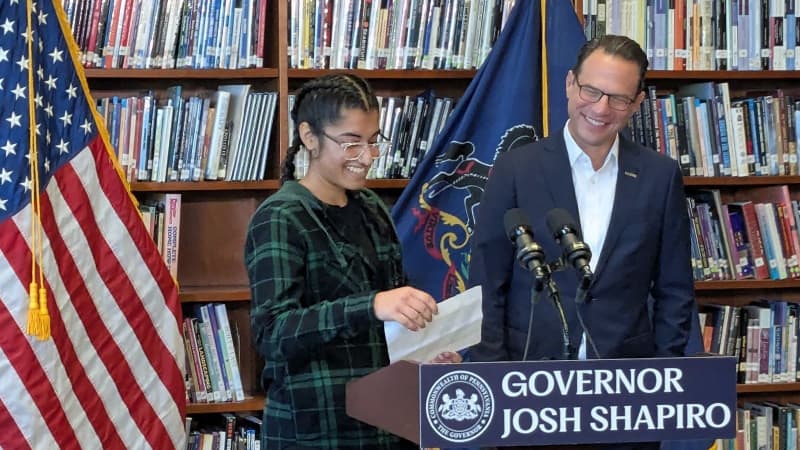(The Center Square) – Alongside the rise of political violence and tense social discourse, many observers point to the rise of misinformation and disinformation on the internet, the use of “rage-baiting” algorithms, and the proliferation of media created using artificial intelligence.
Learning how to navigate the content available is a Herculean task for most adults still grappling with the breakneck cultural shifts fostered by the internet. For students, Pennsylvania educators say it’s imperative.
Gov. Josh Shapiro and Acting Education Secretary Dr. Carrie Rowe joined lawmakers at Middletown Area High School on Tuesday to have frank discussions with students about information literacy and the challenges that face them in the age of social media.
“I believe deeply that the power of knowledge comes not just from being able to access the information, but from being able to understand it,” said Rowe. “Our students live in a world where misinformation spreads fast, where media messages compete for their attention and where the ability to distinguish fact from fiction is no longer optional but really essential. It’s essential for education, it’s essential for civic life, and it’s essential for our continued trust in our institutions.”
The visit was in support of the state’s digital literacy toolkit, an initiative first conceived by First Lady Lori Shapiro. The toolkit, which has resources for parents, students, and educators, is one that Rowe says is in a state of constant evolution, receptive to both changes in the media landscape and feedback from students like those at Middletown.
Government teacher Josh Rytel spoke about the way students at Middletown engage with texts to develop information literacy skills. His students participate in a political ideology unit in which they choose a topic they explore from all sides.
“During this unit, students develop an understanding of what bias looks like and reflect on the biased information while also examining perspectives politically from the different perspectives and points of view,” said Rytel. “At the end of the day, students have the opportunity not only to understand media bias but also have an opportunity to develop their own opinions and have their own values.”
Bias isn’t the only issue students have to contend with when considering the authority of a source.
They also have to learn to evaluate whether a person speaking is even real or AI-generated. Shapiro offered the example of President Donald Trump’s posting of a video of Democratic congressional leadership in which a fake Rep. Hakeem Jeffries was wearing a sombrero and a fake Sen. Chuck Schumer referred to the party as “woke pieces of s—.”
Some schools like Middletown have built-in technology to screen out videos like that and to prevent both misinformation and distraction. The systems themselves help to teach students about vetting sources by removing some and prioritizing traditionally trustworthy sites like those with .gov and .edu domains.
“To me, the digital filtering system not only filters away unreliable or harmful sources and content but instills a sense of discipline within me, which is why it offers an additional advantage to its intended purpose,” said junior Sana Vereen.
Asked about phone bans, Shapiro said that he doesn’t want to take the power away from teachers and administrators to make those decisions at the school level.
“They can’t pretend that this technology doesn’t exist, and I think bans like that tend to suggest that we’re going to just pretend something doesn’t exist because it’s hard,” said Shapiro. “I think the work we need to do is exactly what we’re doing here today, giving these students – giving these young entrepreneurs, these young powerful people with thoughts that they want to share – the tools to be able to use those phones responsibly at the appropriate time based on when the superintendent or their teachers say, but we want them to use the phones in a way that can be constructive and productive and teach them how to do that.”









